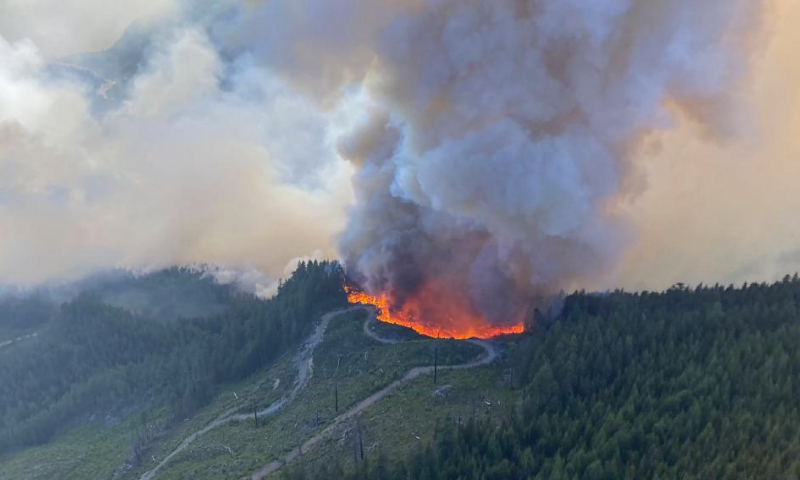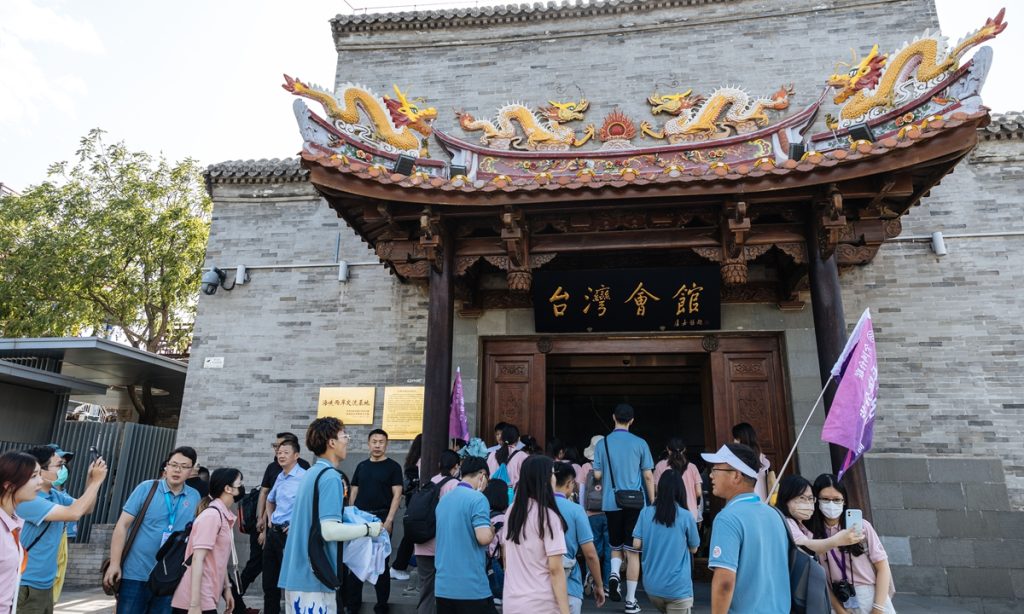Forest fires should be included in carbon emission accounting system: Chinese scientists

Chinese scientists urged the world to establish a comprehensive carbon accounting system that includes natural processes, especially extreme forest fires, as international delegates are gathering in Dubai to find a deal that will make a real difference in tackling the planet's climate issues at the 28th Conference of the Parties to the UN Framework Convention on Climate Change (COP28), according to the Shenyang-based Institute of Applied Ecology (IAE), Chinese Academy of Sciences (CAS), on Thursday at a press conference on a blue paper on the carbon emissions of forest fires.
Led by the Institute of Applied Ecology, and jointly compiled by the Institute of Earth Environment and the Institute of Atmospheric Physics of the CAS, the document points out that, from 2001 to 2022, the annual average area of forest burned globally was 46.95 million hectares, which is 11 times the annual average increase in artificial forest area during the same period.
During this period, the total carbon dioxide emissions from global forest fires reached 33.9 billion tons, which could increase atmospheric carbon dioxide concentration by 4.35 ppm (parts per million), the blue paper said.
Forest fires are a common disturbance in forest ecosystems, significantly affecting the composition, structure and succession characteristics of forests, thereby altering the material cycling and energy flow of forest ecosystems, said Xu Wenru, a researcher at the IAE and one of the lead authors of the blue paper.
Extreme forest fires have become more frequent in recent years, mainly due to climate change and human activities, leading to an increase in global carbon emissions, according to the blue paper.
"Our study has proven that the amount of emissions from forest fires is huge, so we think it is necessary to include forest fire carbon emissions into a carbon emission accounting system. On the other hand, once established, such a comprehensive accounting system will help urge related governments enhance prevention and management of extreme forest fires," Zhu Jiaojun, director of IAE, told the Global Times.
In terms of the impact of climate change and human activities on extreme forest fires, Zhu noted that these three elements are connected. He called for further scientific research and more international cooperation on fire carbon emissions.
Taking the extreme forest fires in Canada in 2023 as an example, the blue paper points out that direct carbon dioxide emissions from this fire exceeded 1.5 billion tons, higher than the total carbon dioxide emissions from forest fires in Canada over the past 22 years (1.374 billion tons). "This severely weakened the carbon sink function of forest ecosystems," Xu noted.
According to the blue paper, from May to August, the forest fires in Canada emitted a total of 10.02 million tons of PM2.5, causing environmental pollution not only in Canada but also significantly affecting air quality in large areas of the Northern Hemisphere.
The blue paper also presented significant spatial differences in global forest fire carbon dioxide emissions, with the carbon emissions from high-latitude coniferous forest areas in the Northern Hemisphere showing a rapid increasing trend. Between 2001 and 2022, Africa witnessed the largest areas that had been burned each year (33.32 million hectares), followed by Southern America (5.18 million hectares) and Asia (5.12 million hectares).
China's forest area accounts for 5.4 percent of the global total forest, but its carbon emissions from forest fires only account for 0.65 percent of the global total for forest fire emissions, significantly lower than the global average, the blue paper noted. From 2001 to 2022, China's carbon emissions from forest fires showed a significant downward trend, with annual average carbon dioxide emissions of 10 million tons.
China has adhered to the policy of "prevention as the primary focus, combining prevention and control." The country has also established an effective forest fire warning and monitoring system, and a comprehensive fire prevention network. Thanks to the efforts of the whole society, both the frequency and the burned area of forest fires have been declining since 2001, according to Xu.

